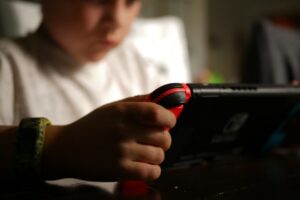
We are a reader-supported education publication. When you buy through links on our site, we may earn an affiliate commission to help us keep providing content.
Ever since technology began to edge out more traditional methods of learning and living, society has debated whether it lends itself to the creative mind — and most studies point to yes.
Many individuals view technology in the classroom through the lens of distracting social media platforms, but different forms of tech can enhance the classroom environment and facilitate unique learning opportunities. The key is knowing how to use it.
Students and educators benefit from technology’s streamlined characteristics, which help boost the creative process. Creation involves intent, persistence and knowledge — and the internet alone holds a wealth of information that can transform the ways people develop their creativity. In addition to increasing wisdom, technology allows students to learn in a familiar way they feel comfortable with.
In a world that’s changing so rapidly, students and educators must consider how they can integrate technology into lesson plans, exams and projects. Here are a few resourceful ways students can use technology to complement their natural creativity.
1. Build Unique Projects

Technology is a major part of the STEM field, so it’s only natural for students to use it when developing projects. Group work no longer has to be the standard after-class meeting in the library. Students can use Google Docs and other collaborative platforms to edit a document simultaneously, giving and receiving feedback in real time. 3D printers streamline the complicated work of building project materials from scratch, which results in efficient and appealing science fair displays.
Virtual laboratories — which typically involve medical and biochemistry experiments — immerse students in learning scenarios where they can utilize skills they’ve learned in the classroom. They may not be able to operate on living, breathing humans yet, but they can attempt it with a virtual recreation.
2. Create Interactive Presentations
Students can add video, picture and audio elements to their presentations for heightened engagement. Most people are familiar with the basic PowerPoint presentation and its slide transitions, but adding more multimedia produces an exciting experience. Students can create their own multimedia as well — many professors utilize the video project format to facilitate student participation and creativity.
Websites like Kahoot foster interaction by allowing students to create quizzes that their classmates can answer with their devices. This collaborative process helps learners absorb information through collective involvement.
3. Use Social Media and Blogging

Believe it or not, social media has its uses within education — professors have been utilizing it since 2010. They often create Twitter or Instagram hashtags that their students can use to communicate questions or comments. Some go with the live-tweeting strategy, where they assign a film for homework and have students post about it on social media as they watch. This method is a fun and convenient way to involve students in a productive and educational discussion.
Additionally, blogs are excellent avenues for students to practice their writing skills without the intimidating constraints of grammar rules. Although using proper grammar is important, blog posts are more relaxed than academic papers or projects, which gives students room to stretch their writing wings. If they make mistakes, no one is going to dock their grade, and they don’t have to worry about formality.
4. Combine Online and Offline Learning
Hands-on methods like complex puzzles and building activities stimulate real-world creativity that translates to the online landscape. Puzzles promote problem-solving and critical thinking, which are necessities for individuals working with programming or coding. Sometimes programmers must choose from numerous options on how to solve a problem — picking the most productive solution isn’t always a linear process. They must be able to reason their way through issues and choose appropriate answers or even invent entirely new ones.
The flipped classroom strategy has steadily expanded across the country since 2012. Teachers apply this method by providing their students videos to watch before coming to class — some are instructional, and others introduce a subject. Once in class, students discuss the topic or carry out the instructions the video gave them. Sometimes professors will also ask learners to conduct their own research on a subject and present their findings. This teaching style centers on the needs of the student and offers the tools they require to learn effectively.
Adopt Technology That Works
Everyone adapts to technology in various ways, so students and educators must discover the methods that work for their learning styles and situations. When used productively, modern technology can offer immense creativity and innovation in school and beyond.
latest in learning!
Get the latest updates in learning, teaching and everything in between! Whether you're a student or an educator, we offer the inspiration you need to fuel your classroom experience.









